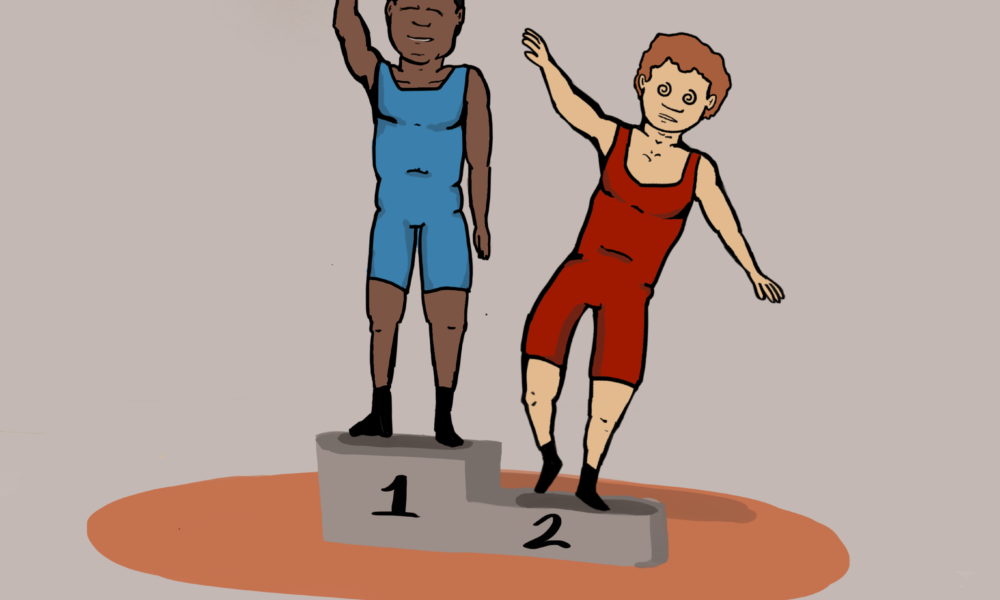Concussions: Either you have had one, or you know someone who has. These injuries are incredibly common—particularly in high-contact sports such as football, hockey, and rugby—and they can leave lasting, debilitating impacts. Yet, despite their dangers, concussions are hard to objectively identify by a third party, making them difficult for coaches and sports medicine professionals to manage.
However, a paper recently published in Medical & Biological Engineering & Computing by orthopaedic surgeon and McGill Professor Paul Martineau shows that concussion symptoms may not be as unidentifiable as they are currently perceived.
This article came about in a very roundabout way; some might say it was a happy accident. As an orthopaedic surgeon, concussions are outside of Martineau’s specialty. His research centres on the knee and preventing ACL injuries, with his current project focusing on ACL injury prevention through the use of an AI prediction model.
The AI model was trained with data collected from McGill varsity athletes over the course of a decade. However, what Martineau was expecting to be two data sets—high-risk athletes versus low-risk athletes—turned out to be three: There was a mystery third group of athletes who were neither high nor low risk, they just jumped differently.
“The third group that popped up that the AI model found, when we looked back, turned out to have a history of concussions [rather than] a present concussion, a concussion they are supposed to be fully recovered from,” Martineau said in an interview with The Tribune.
This third group of previously concussed athletes had empirically worse balance than their non-concussed peers. They took longer to regain their balance after doing a single-leg jump on their non-dominant leg, with a mean difference of 0.35 seconds.
The significance of this data is twofold. First, it shows that concussions have negative impacts on athletes years after they are sustained. Whether these effects are caused by the concussions themselves or simply concussion treatment protocol is still to be determined, but the cause of the change is less pressing than the change itself.
“These findings show [previously concussed athletes] are not jumping like their healthy, elite teammates anymore,” Martineau explained.
Secondly, this data shows that the impact of concussions is measurable. Current sideline concussion assessment techniques rely on rapid screening: Reading, memory, and eye-movement tests. These tests can be effective, but they are unfortunately not foolproof.
While athletes recognize the health dangers of a concussion, they often see a concussion as nothing more than time spent on the bench. Because of this, many athletes “sandbag” their baseline concussion tests: They purposely get low scores, meaning that if they sustain a concussion, the impacts are less noticeable.
“Concussion history is less objective because a player may not voluntarily tell you, because it may lead to that player being taken out of play or not being cleared to play,” Martineau told The Tribune. “So there’s this concept and this literature behind, you know, sandbagging your concussion history.”
Sandbagging is a dangerous practice, but has been considered unpreventable. Martineau’s study has the potential to change this.
“These were preliminary findings, but we’re continuing to delve into them and properly tease them out,” Martineau explained.
Martineau is hopeful that the ACL injury prevention app he and his team have developed for athletes will eventually incorporate some concussion history analysis.
“We’re not including any concussion-related features to start, just because all of this was preliminary data and stuff like that,” Martineau said. “So right now, [the app] is really ACL injury prevention specific, and then we’ll continue to work behind the scenes and see how [concussion-related features] can be included in future iterations.”
Ultimately, Martineau’s findings have begun to shed light on the previously hidden impacts of concussions. The detrimental effects concussions have are now shown to be correlated with long-lasting balance issues—something well worth avoiding if at all possible.
This being said, if you have been concussed in the past and you happen to have notoriously bad balance, Martineau’s findings have given you the excuse you have been looking for: You hit your head when you were twelve, and now you struggle to stand on one leg.









